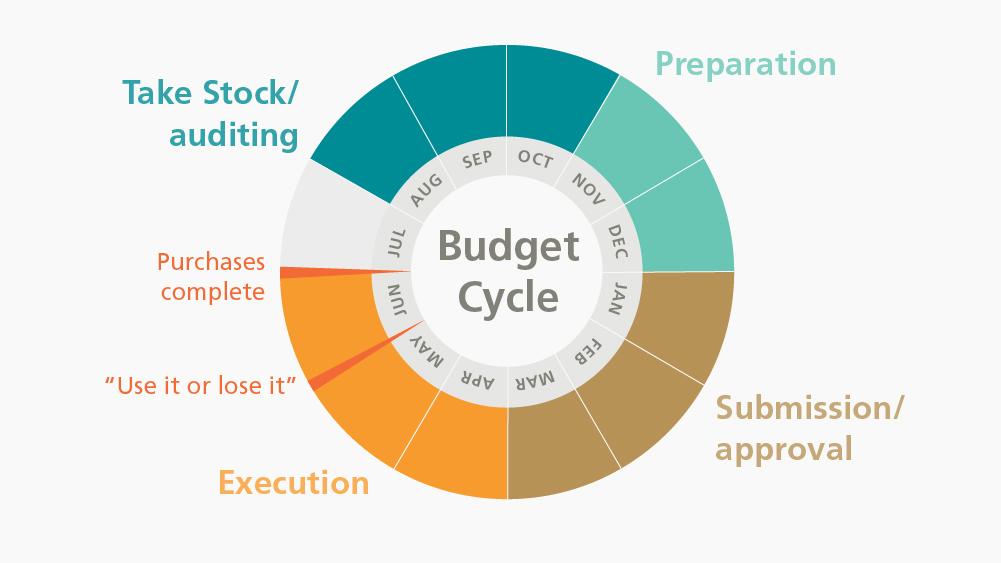
By Tom Smith
Teaching can be a challenge, but budgeting to teach is often a downright pain. Teachers not only face small budgets and limited time to plan out their classrooms each year, but often deal with sudden “use it or lose it” funds with little advance notice. Confusing planning strategies, unclear budget allocations, and stretched resources can make it difficult to plan a budget for their classroom that’s both realistic and meets their needs.
As a former teacher, I know how you feel. I have nine years of my own budgeting experience in public schools, so I understand the frustration that arises when tasked to spend funds as quickly and efficiently as possible. As an Engineering Educational Technology Specialist at Vernier Software & Technology for the past four years, I’ve spent plenty of time helping teachers from various schools work with and plan their budgets. I’ve developed some tips over the years that can help you utilize your funding money in a way that will not only help you save money and resources, but will also best benefit your students.
Take Stock
One thing you can do when planning next year’s budget is take stock. Start by making a list of what you already have, what you want, and what you think you’ll need over the next year. This will help you prioritize what you want over what you need. We can help by providing a list of Vernier technology. Follow these steps to ensure that your list reflects what you want to focus on most and why:
- Take note of any equipment that needs to be replaced and how much it costs to replace it.
- Consider the things that need to be upgraded so your classroom isn’t out of date.
- List anything new you want to incorporate into your class and consider related costs.
Plan Around Your Budgeting Cycle
The full budgeting cycle for most schools begins sometime in October, ends the following August, and has four stages: preparation, approval, execution, and auditing. Things that are typically considered when determining the year’s budget include enrollment, planned new courses, equipment, and staff needs. Utilize your school’s process as a framework, and structure your budget list with the same basic stages and considerations that are already in place for your school.
Take into account when you’re most likely to spend money. For many teachers there are two main ordering timeframes: early spring for back to school purchases for the following school year and end of fiscal year purchases to use money that would otherwise be forfeited. You may find you need equipment outside of these times, so if possible, reserve a comfortable padding of money in your budget for anything you may have forgotten, for items that need to be replaced, or for things that you want to add into your curriculum.
Find Alternative Resources
Sometimes you need to call on the community for help. Websites, like DonorsChoose.org for instance, bring together a broader community of people interested in supporting education and educators. Most projects funded by this site are under $1,000, and in my experience, the more modest requests get funded fairly easily.
Another way to incorporate the community into your fundraising efforts is through your Parent/Teacher Association (PTA). Not only do they help gather and coordinate volunteers, but PTAs are composed of parents and community members who are interested in supporting teacher-inspired improvements in the schools they serve. In addition to donations, PTAs are often willing to fund clubs and help supply much-needed equipment. PTAs are also very effective at helping coordinate fun events to raise money, like auctions or science fair nights.
Lastly, whenever you are interested in adding new technology or equipment to your classroom, look for opportunities to first preview the product instead of buying right away. Many companies, including Vernier, provide this service to educators free of charge. By doing this, you can see how the product works in your classroom or lab setting and takes some of the guesswork out of purchasing new technology and equipment before any money is spent.
Learn About Grants and Awards
Millions, if not billions, of dollars in grant money are out there, including both local and federal grants—it’s just a matter of finding it. Grant seeking is a great option for equipment and supplies that require additional funding, even if it requires a little extra effort in writing proposals and providing information. If you’re not sure how to write a grant proposal or what to include in it, check out this Grant-Writing Guide for useful tips to help you get started. Vernier offers several grants and awards specifically for hands-on data-collection technology that will enhance your classroom, so be sure to look for grants and awards to best suit your needs.
Create a Wish List
Vernier offers a “Wish List” option in our shopping cart so you can add items now, even if you can’t purchase them until later. It is also easy to request a quote from this tool to get the full cost, including shipping, which you can present to your administrator for review and approval. Vernier technical support specialists are former educators skilled in knowing how to help you get the most from your funding as you develop your wish list and implement it into your classroom. If you would like to request assistance, you can reach a specialist by phone at 888-837-6437 or email at info@vernier.com
You’re the Most Important Piece
It’s important to keep in mind that equipment and supplies only supplement teaching. Education depends on the quality of the teacher, not what’s in the classroom. Have a clear purpose for all of your equipment. Know exactly what you want to do with it and how it will best equip your students for learning. With some planning and creativity, you can set up yourself and your students for success all school year while making the most of your classroom budget.
